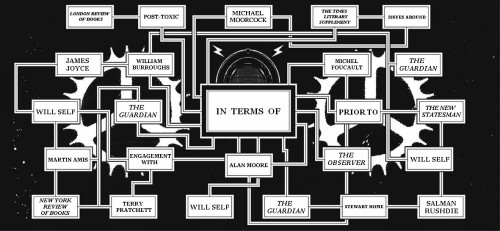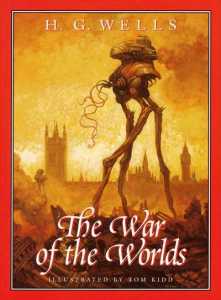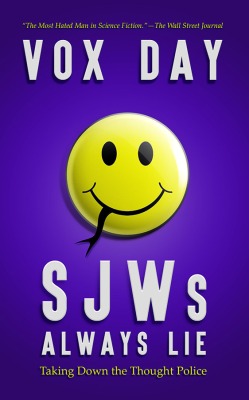 The Collected Stories, Arthur C. Clarke (Victor Gollancz 2000)
The Collected Stories, Arthur C. Clarke (Victor Gollancz 2000)
Do you want to know the difference between ingenuity and imagination? Between literary competence and literary genius? Then compare Arthur C. Clarke’s short stories with J.G. Ballard’s short stories. Reading Ballard is like exploring a jungle; reading Clarke is like touring a greenhouse. Ballard is haunting and head-expanding in a way that Clarke isn’t, much as he might have wanted to be.
You could say that the difference between them is like the difference between wizardry and engineering or poetry and prose or madness and sanity. Clark Ashton Smith and J.R.R. Tolkien are different in the same way. Ballard and Smith could conjure dreams on paper; Clarke and Tolkien could create realistic worlds. I like all four writers, but I don’t place them at the same level. There is a great gulf fixed between the wizards and the engineers. I’m reminded of it every time I read Clarke and Tolkien, so part of the value of their work is that it teaches me to appreciate Ballard and Smith more. Or to marvel more.
All the same, the engineers could do things that the wizards couldn’t. Clarke and Tolkien were better educated than Ballard and Smith, and Clarke knew more about hard science than Ballard. There are some ideas and images in this book that take realism to its limits. The life-form that Clarke invented for “Castaway” (1947) has stayed with me ever since I read the story as a child. It was thrown off its home-world by a storm – or rather, thrown out of its home-world. That’s because it was a plasma-creature living inside the sun until it was ejected by a solar storm and blown on the solar wind to the Earth:
The tenuous outer fringes of the atmosphere checked his speed, and he fell slowly towards the invisible planet. Twice he felt a strange, tearing wrench as he passed through the ionosphere; then, no faster than a falling snowflake, he was drifting down the cold, dense gas of the lower air. The descent took many hours and his strength was waning when he came to rest on a surface hard beyond anything he had ever imagined.
The unimaginably hard surface is actually the Atlantic Ocean, where the plasma-creature is detected by the radar of an overflying jet-liner. It looks like a giant amoeba to the wondering humans who are watching the radar, but they can’t see anything at all when they look at the water. The story is a very clever exercise in shifts of perspective and Clarke returned to these ideas in “Out of the Sun” (1958), in which the same kind of creature is thrown out of the sun and lands on Mercury, where it freezes to death in “seas of molten metal”. More wondering humans have watched it fly through space on radar from a solar-observation base. As it dies, the humans feel a “soundless cry of anguish, a death pang that seeped into our minds without passing through the gateways of the senses.”
There’s also alien life and clever invention in “A Meeting with Medusa” (1971), which is about a solo expedition to Jupiter that discovers giants in the clouds: browsing herbivores that defend themselves from swooping predators with electrical discharges. The explorer is called Falcon and is part-robot after an air-ship crash on earth. That enables him to survive “peaks of thirty g’s” as his air-ship, called Kon-Tiki, descends to the “upper reaches of the Jovian atmosphere” and collects gas so that it can float there and observe. The story takes you to Jupiter and teaches you a lot about Jovian physics, chemistry and meteorology: it’s realism, not reverie, and Falcon’s discovery of life is entirely plausible.
The story was probably influenced by Arthur Conan Doyle’s “The Horror of the Heights” (1913), a proto-Lovecraftian story in which an early aviator discovers similar predators high in the air above Wiltshire. Doyle’s contemporary H.G. Wells was certainly an influence on Clarke: there’s even a piece here (not a proper story) called “Herbert George Morley Roberts Wells, Esq.” (1967). Clarke also knew Lovecraft and wrote a short parody of At the Mountains of Madness (1931) called At the Mountains of Murkiness, but the parody isn’t collected here and Lovecraft’s influence isn’t very obvious. Clarke had a sunny and optimistic personality and wrote few dark or depressing stories. There is a definite Lovecraftian touch, however, in one of the mini-stories collected under the title “The Other Side of the Sky” (1957). In “Passer-By”, an astronaut describes seeing something as he travels between space-stations on a rocket scooter. First he spots it on radar, then watches as it flies past:
I suppose I had a clear view of it for perhaps half a second, and that half-second has haunted me all my life. […] Of course, it could have been a very large and oddly shaped meteor; I can never be sure that my eyes, straining to grasp the details of so swiftly moving an object, were not hopeless deceived. I may have imagined that I saw that broken, crumpled prow, and the cluster of dark spots like the sightless sockets of a skull. Of one thing only was I certain, even in that brief and fragmentary vision. If it was a ship, it was not one of ours. Its shape was utterly alien, and it was very, very old.
It’s Lovecraftian to compare the portholes of a space-ship to the eye-sockets of a skull. So is the idea of a “very, very old” wreck flying between the stars. The uncertainty and doubt are Lovecraftian too, but you could also say that they’re scientific. Clarke often emphasizes the fallibility of the senses and the uncertainty of inferences based on them. Science is a way of overcoming those sensory limitations. In Lovecraft, science is dangerous: that uncertainty would slowly give way to horror as the truth is revealed. Clarke’s protagonist experiences no horror and though he’s haunted for life by what he might have seen, he feels that way because he didn’t learn enough, not because he learnt too much.
That story may have been the seed for Rendezvous with Rama (1973), which could be seen as a more optimistic re-working of At the Mountains of Madness. Puny humans explore a titanic alien artefact in both stories, but Clarke’s humans aren’t punished for their curiosity and at the end of the novel they look forward to indulging more of it. Clarke is good at grandeur and invoking the hugeness of the universe. He wrote about galaxy-spanning empires, giant scientific discoveries and struggles to save the universe.
He wrote about the multiverse too and there’s a story that makes the multiverse seem big by portraying a very confined part of it. This is the opening paragraph of “The Wall of Darkness” (1949):
Many and strange are the universes that drift like bubbles in the foam upon the river of Time. Some – a very few – move against or athwart its current; and fewer still are those that lie forever beyond its reach, knowing nothing of the future or past. Shervane’s tiny cosmos was not one of these: its strangeness was of a different order. It held one world only – the planet of Shervane’s race – and a single star, the great sun Trilorne that brought it life and light.
Shervane is a young man who makes a very strange discovery when he tries to cross a giant wall that circles his home planet. What is on the other side? In a way, everything is. This is another story that has stayed with me from my first reading of it as a child. And it could almost have been written by Ballard: like Ballard’s “The Concentration City” (1957) or “Thirteen to Centaurus” (1962), it’s about trying to escape from confinement and making an unexpected or ironic discovery about the true nature of things. Unlike Ballard, Clarke didn’t spend the Second World War locked in a prison camp, but he could get big ideas from a wall and the limit it imposed.
Neither he nor Ballard always wrote about big and serious ideas, however. Many stories here are deliberately small and silly, or big in a ludicrous way. P.G. Wodehouse seems to be an influence on the stories that come under the heading of Tales from the White Hart, in which Harry Purvis spins fanciful yarns for an audience of scientists and science-fiction writers in a pub in London. One story has an exploding moonshine still, another a giant squid that’s angry about its brain being manipulated, another a fall of twenty feet during which an unfortunate scientist doesn’t merely break the sound-barrier, but travels so fast that he’s burnt alive by air-friction.
It’s a horizontal fall too, although the story is called “What Goes Up” (1956). Clarke was playing with science there; elsewhere, in stories like “Green Fingers”, part of “Venture to the Moon” (1956), he’s making serious suggestions. The story is about a botanist on the moon who is killed by his own ingenuity, but it’s not a gloomy, Lovecraftian doom. Risks are part of exploration and adventure and Clarke presented space-travel as a new form of sea-faring. He loved both the sea and the sky and his love shines brightly here. So do “The Shining Ones” (1962), the intelligent cephalopods who end the life of another of his protagonists.
The premature death of adventurous young men is a theme he shared with A.E. Housman, whose poetry he greatly admired, but Clarke could also write about the rescue of adventurous young men, as in “Hide-and-Seek” (1949), “Summertime on Icarus” (1960) and “Take a Deep Breath” (1957). And deaths in his work aren’t futile or proof that man is always ultimately defeated. If Clarke had written pessimistically like that, he wouldn’t have been so popular among working scientists or inspired so many children to enter science. But he could appeal to children partly because he never properly grew up himself. Unlike Ballard, he never married or had any children of his own and his decision to live on Sri Lanka was probably inspired in part by paederasty, not just by his interest in scuba-diving.
My final judgment would be that he was an important writer, not a great one. I’ve enjoyed re-reading the stories here – even the numerous typos were fun – but that’s partly because they’ve sharpened my appreciation of J.G. Ballard. Clarke had no spark of divine madness: he was Voltaire to Ballard’s Nietzsche. His work does sparkle with intellect and ideas, but he made more out of science than he ever did out of fiction.
Previously pre-posted on Papyrocentric Performativity:
• Clarke’s Arks – reviews of Imperial Earth (1976) and Rendezvous with Rama (1973)
Read Full Post »















